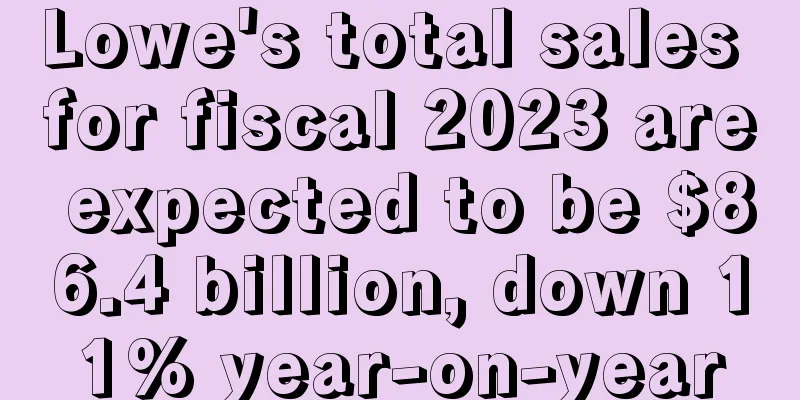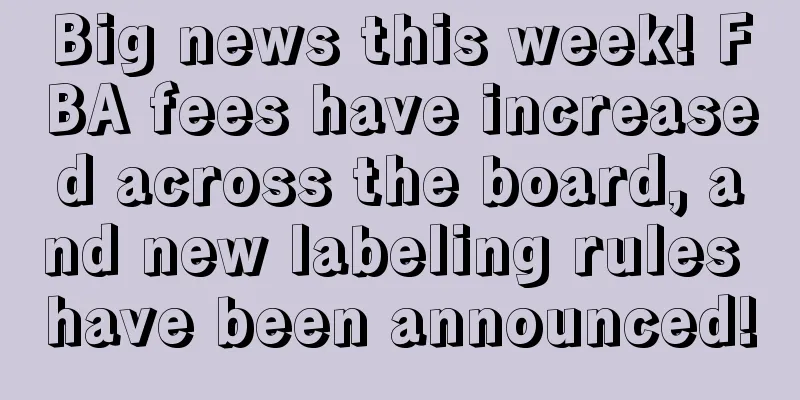Sellers, please note! Amazon is strictly investigating these two new regulations

|
|
<<: Amazon's super plug-in! AI tools help with graphics and continue to make big sales! !
>>: Outrageous! Amazon advertising rules changed, bids automatically increased by 50%? !
Recommend
What is Cross-border Knowledge? Cross-border Knowledge Review
Cross-border Know is a cross-border information an...
What is Nowmsg? Nowmsg Review
Nowmsg can help users easily and quickly query pos...
Poshmark will enter the Indian market! Its Q2 quarterly financial report will be released next week
Poshmark, the US second-hand e-commerce giant, has...
Mid-year review of Amazon’s US market! A must-read for the second half of the year
2022 is already halfway through, and the rush for ...
My brother-in-law has a change of heart! Sellers are exempted from Amazon flash sale fees!
“July 1 is coming soon, and the postage for small ...
What is Tatcha? Tatcha Review
Tatcha is a natural beauty brand acquired by Unile...
Fakes are rampant! Etsy is accused of condoning the sale of fakes, and its stock price plummeted 8.4%
It is learned that on February 16, the founder of ...
Sad! iPhone 12 phone cases were removed from shelves! A large number of sellers were tricked by Putian Best Seller...
Infringement issues occur every year, especially d...
What is Cyber Monday? Cyber Monday Review
Cyber Monday refers to the first Monday after Bl...
What is Weikelu? Weikelu Review
Guangdong Weikelu Supply Chain Logistics Co., Ltd....
Amazon will launch a Polish site? What is the market potential?
Recently, many sellers have received emails from A...
Starting April 4, 2025, Amazon will remove inventory that has been stored for more than 270 days from its fulfillment centers?
Panda loves to sleep My C position I just got to w...
Amazon's advertising costs have skyrocketed. Is there something mysterious about its traffic allocation mechanism?
In 2023, as the competition to go overseas becomes...
Amazon is on the hot search list amid many doubts! Ban all Xinjiang cotton products?
<span data-shimo-docs="[[20,"最近两天,HM抵制新疆棉花...
What is the MWS authorization dispute? MWS authorization dispute review
In September 2018, a number of Amazon seller accou...









